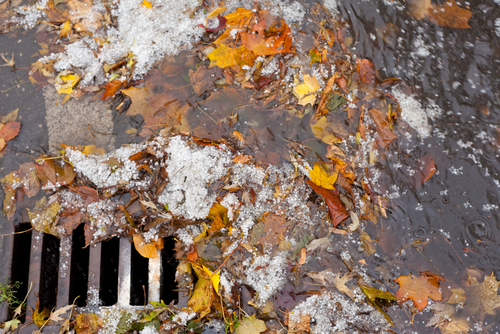 |
From the start, the quality of your SWPPP will depend on the commitment of the team creating and implementing it. For that reason, it is essential that the person or persons responsible for inspection and corrective actions be qualified and dedicated to the job. Moreover, poorly performed inspection activities, including recordkeeping, remain one of the top violations so it is in the best interest of the project that the work be taken seriously from day one.
To ensure inspectors are adequately qualified, the EPA defines “qualified” as follows:
“CGP Part 4.1.1 clarifies that a “qualified person” is a person knowledgeable in the principles and practices of erosion and sediment controls and pollution prevention, who possesses the skills to assess conditions at the construction site that could impact stormwater quality, and the skills to assess the effectiveness of any stormwater controls selected and installed to meet the requirements of this permit.”
Many states and local stormwater authorities require specific stormwater training for construction-site qualified personnel. If your stormwater team does not meet your applicable requirements, you should consider either immediate staff training or hiring a third-party firm specializing in construction-site stormwater operations.
Join us on October 30 for an in-depth webinar all about construction stormwater regulatory compliance. Your expert presenters will provide you with a clear path forward for in developing and implementing a compliant program.
Register Now
In addition, when inspections take place is an equally important aspect. According to the EPA Construction General Permits (CGP) requirements (Part 4.1.4), inspections must occur either:
- Once every 7 calendar days, or
- Once every 14 calendar days and within 24 hours of a storm event of 0.25 inches or greater.
These are the basic requirements and they may be increased or decreased for such reasons as discharging to a sensitive water body, for climatic factors like drought or frozen conditions, or if areas are adequately stabilized.
What areas must be inspected is also defined by the EPA (Part 4.1.5) and include:
- Areas that are cleared, graded, or excavated,
- Stormwater controls,
- Areas covered by the permit as material, waste, or borrow areas,
- Equipment and maintenance areas,
- Stormwater flow areas,
- Stormwater discharge points, and
- Stabilized areas.
Learn key elements of the federal stormwater permit program and the construction general permit requirements during our in-depth webinar on October 30.
Register Now
Now that we know the who and the where of inspections, what to inspect is next. EPA’s CGP (Part 4.1.6) defines the required inspection checks as:
- All stormwater controls and pollution prevention practices—to determine if they require maintenance or replacement or if they require new or modified controls,
- Present conditions that may lead to pollutant leaks, spills, discharges, or accumulations,
- Visible signs of sediment erosion or buildup at discharge points and channels and stream banks in the immediate vicinity,
- During a stormwater discharge, if there are “obvious, visual signs” of pollutants in the discharges, and
- If any permit violations have occurred.
All information recorded during an inspection should be included in an Inspection Report. This includes:
- Inspection date,
- Names and titles of inspector(s),
- Summary of findings,
- Readings from a rain gauge or weather station if the inspection was triggered by a 0.25-inch storm, and
- Documentation of any areas deemed to be unsafe to access for inspection, including what and where conditions occurred to prevent the inspection.
In the event that a corrective action is required, the CGP requires that it be documented within 24 hours of discovery of the condition and completed within 7 calendar days. If this deadline is not feasible, the EPA requires documentation of the reasons and a schedule of completion “as soon as practicable.” Each 24-hour corrective action documentation must include:
- The condition identified,
- The nature of the condition, and
- Date and time identified and how it was identified.
Each 7-day corrective action documentation must include:
- All follow-up activities and their dates review for stormwater controls including design, installation and maintenance,
- A summary of modifications taken, or to be taken, of stormwater controls, including an implementation schedule with date of completion or anticipated completion, and
- Notice of whether SWPPP modifications are required as a result of the condition identified or the corrective action taken.
